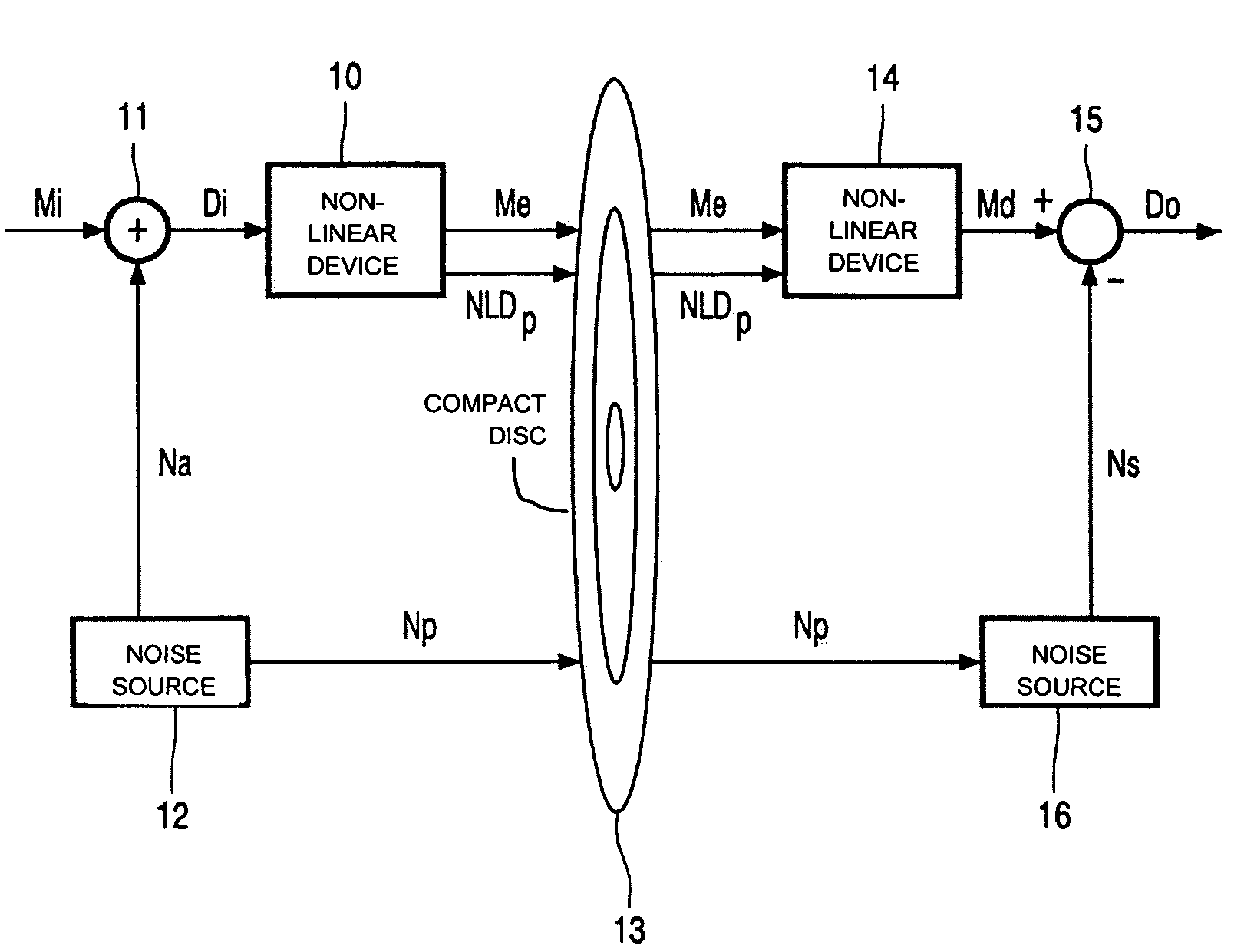Method and apparatus for reducing the word length of a digital input signal and method and apparatus for recovering a digital input signal
- Summary
- Abstract
- Description
- Claims
- Application Information
AI Technical Summary
Benefits of technology
Problems solved by technology
Method used
Image
Examples
Embodiment Construction
[0022]A digital input signal Di, having a word length of n bits (e.g., 20 bits) is input to a first non-linear device (NLD) 10. The first NLD 10 has a transfer characteristic such that the word length of the digital input signal Di is reduced from n bits to m bits for the first reduced word-length signal Me (e.g., from 20 bits to 16 bits, as in a usual CD signal). The transfer characteristic is non-linear, e.g., the quantization step for small amplitudes is larger than the quantization step for large amplitudes. The gain for small amplitudes may be substantially equal to one (linear characteristic), while for large amplitudes, the gain decreases. An example for such a transfer characteristic is the following function:
Me / Di=c1 tan h(c2Di+c3), c1, c2 and c3 being predetermined NLD parameters NLDp.
[0023]In general, the characteristic function of the first NLD 10 should comply with the requirements that the function should be monotonous over the input signal range, that for zero input v...
PUM
 Login to View More
Login to View More Abstract
Description
Claims
Application Information
 Login to View More
Login to View More - R&D
- Intellectual Property
- Life Sciences
- Materials
- Tech Scout
- Unparalleled Data Quality
- Higher Quality Content
- 60% Fewer Hallucinations
Browse by: Latest US Patents, China's latest patents, Technical Efficacy Thesaurus, Application Domain, Technology Topic, Popular Technical Reports.
© 2025 PatSnap. All rights reserved.Legal|Privacy policy|Modern Slavery Act Transparency Statement|Sitemap|About US| Contact US: help@patsnap.com



